
 |
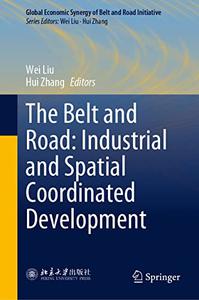 The Belt and Road: Industrial and Spatial Coordinated Development English | 2022 | ISBN: 9811921326 | 643 Pages | PDF EPUB (True) | 7 MB This book mainly addresses China's Belt and Road Initiative in terms of the connectivity industrial and spatial development, as well as current world's economic and trade pattern under such synergy development, and focuses on the function and mechanism of industry and geography coordination. Although current research on the value circulation between China and developed economies is relatively adequate, the book focuses on the value circulation between the countries and regions, especially the developing economies. China and other developing countries tie strongly with the production value circulation. The coordination industrial and spatial development in the global value cycle is also the cornerstone of long-term stabilization and sustainable development in China. Therefore, this book provides the theoretical and empirical research on Belt and Road from the perspectives on industrial and spatial synergy. This book proposes several questions: Any inherent inlay between industrial and geographic allocation, i.e., is there any possibility for close integration? This book analyzes the necessity of coordinated development of industry and space perspective of production division. Secondly, from the perspective of historical evolution and current situation, it analyzes the relationship among industry, economic growth and fluctuation and compares realizing paths of synergy of industrial and spatial development. It contains the industry and spatial diffusion mechanism and the effect of synergy development. Moreover, the corresponding policy implication is provided for sustainable development through the Belt and Road Initiative.
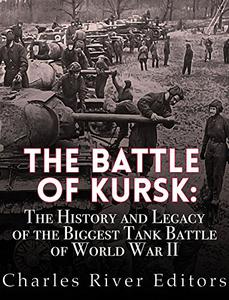 The Battle of Kursk: The History and Legacy of the Biggest Tank Battle of World War II by Charles River Editors English | January 13, 2016 | ISBN: 1523383119 | 62 pages | EPUB | 1.32 Mb *Includes pictures *Includes accounts of the battle by generals and soldiers on both sides *Includes online resources and a bibliography for further reading *Includes a table of contents "The Russians have learnt a lot since 1941. They are no longer peasants with simple minds. They have learnt the art of war from us." - Wehrmacht Generaloberst Hermann "Papa" Hoth at Kursk (Healy, 1992, 90) "On the German side, the reserves which will become so desperately necessary as the war situation develops [...] will be tied down and thrown away uselessly. I consider the operation that has been planned a particularly grave error, for which we shall suffer later." - Colonel Reinhard Gehlen, Wehrmacht intelligence analyst, writing about Operation Citadel (Fowler, 2005, 66). The vast expanses of southern Russia and the Ukraine provided the Eastern Front arena where the armies of Third Reich dictator Adolf Hitler and Soviet dictator Josef Stalin wrestled lethally for supremacy in 1943. Endless rolling plains - ideal "tank country" - vast forests, sprawling cities, and enormous tracts of agricultural land formed the environment over which millions of men and thousands of the era's most formidable military vehicles fought for their respective overlords and ideologies. The winner could expect to reap very high stakes indeed. If Hitler's Wehrmacht smashed the Red Army, he could no longer hope for a lightning conquest, but the Fuhrer could expect the Soviet strongman to sue for peace on terms advantageous to Germany. If, conversely, the Red Army triumphed, Stalin could continue rallying the Soviet Union and move closer to expelling the loathed "Nemets" invaders from Russian soil - and perhaps carve out a Soviet empire in Central Europe. Asserting that changes in the military leadership style of the two contending dictators explains the outcome of Kursk oversimplifies the actual situation. Logistics, the emergence of a body of experienced junior officers in the Red Army, American Lend-Lease shipments, German production problems, and other issues all contributed to the observed result. However, the overarching factor tying everything together remained the changing approach of each leader to their army. At the start of the war, Hitler gave his commanders considerable initiative while Stalin fatally micromanaged his, and the Germans ripped vast hordes of Soviets to shreds with comparative ease. In late 1942 and moving into 1943, Hitler commenced micromanaging the Wehrmacht, and Stalin adopted a more "hands-off" approach permitting his commanders considerable initiative: "At the heart of the Red Army's lopsided tank losses was an amateurish and self-destructive style of decision imposed by Stalin [...] In November 1942 there was a subtle shift in the Red Army, as months of military disasters finally caused Stalin to reduce some of his interference [...] and allow quiet professionals such as Vasilevsky, Vatutin and Rokossovsky to prepare proper offensives." (Forczyk, 2013, 257). Though the Wehrmacht remained too formidable and professional to collapse as readily as the appallingly low-quality Red Army had in 1941 and early 1942, the Red Army slowly got the upper hand and achieved strategic offensive momentum. That the shift occurred at the moment when Hitler hamstrung his generals with his melodramatic obstructionism while Stalin gave his some operational breathing room probably represents no accident. Kursk represented the transitional battle during which the Red Army first demonstrated its new capabilities. The Soviets possessed better commanders than at the start of the war, a numerous soldiery, good-quality equipment (in particular, the T-34 tank), and the beginnings of a professional officer corps. Nevertheless, it required personal, ham-handed intervention by Adolf Hitler to transform Kursk from a probable hard-won Wehrmacht victory into a marginal but highly significant defeat.
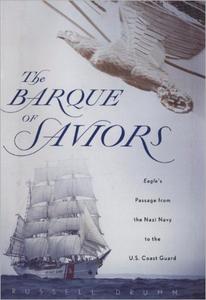 The Barque of Saviors: Eagle's Passage from the Nazi Navy to the U.S. Coast Guard by Russell Drumm English | November 16, 2001 | ISBN: 0395983673, 1439222193 | True EPUB | 250 pages | 3.7 MB The "remarkable story" of a tall ship's history in WWII and beyond-and the sailors who have inhabited it, both German and American (Booklist).
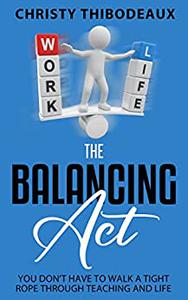 The Balancing Act : You don't have to walk a tight rope through teaching and life! by Christy Thibodeaux English | September 3, 2022 | ISBN: N/A | ASIN: B0BD2M21K3 | 80 pages | EPUB | 0.4 Mb This book will assist you in navigating through your first year as an educator. "The Balancing Act" will help you recalibrate your "ROOUTT" and take you on a journey to the Balanced Land of peace and success within you. Enjoy this incredible publication and be blessed in your educator process!!!!  The Awakening Giant: Britain in the Industrial Revolution by E.R. Chamberlin English | September 11, 2022 | ISBN: 0713430532 | 171 pages | EPUB | 0.37 Mb An insightful account of how the Industrial Revolution transformed Britain from a largely agricultural society to the workshop of the world.
 Anne Zetsche, "The Atlantik-Brücke and the American Council on Germany, 1952-1974: The Quest for Atlanticism " English | ISBN: 3030639320 | 2021 | 317 pages | PDF | 4 MB ""Based on impressive multi-archival work and a keen sense for a good narrative, the author introduces us to the complex, interlocking networks of the littleknown Atlantik-Brücke and the American Council on Germany. A fantastic addition to our understanding of the 'Transnational Transatlantic' in the 20th century"  Paul Goldin, "The Art of Chinese Philosophy: Eight Classical Texts and How to Read Them" English | 2020 | ISBN: 0691200793, 0691200785 | PDF | pages: 357 | 9.7 mb A smart and accessible introduction to the most important works of ancient Chinese philosophy―the Analects of Confucius, Mozi, Mencius, Laozi, Zhuangzi, Sunzi, Xunzi, and Han Feizi 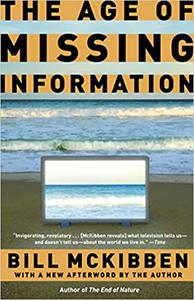 Bill McKibben, "The Age of Missing Information" English | 2006 | ISBN: 081297607X, 0394589335 | 288 pages | EPUB | 3.2 MB "Highly personal and original . . . McKibben goes beyond Marshall McLuhan's theory that the medium is the message." 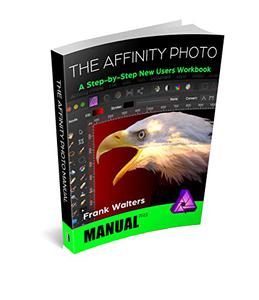 The Affinity Photo Manual: A Step-by-Step New Users Workbook by Frank Walters English | 2022 | ISBN: N/A | ASIN: B0B5SP4KLC | 182 pages | EPUB | 12 Mb Affinity Photo continues to be the fastest-growing, new photo editor on the market today and is quickly becoming the first choice for creative professionals and photographers alike. 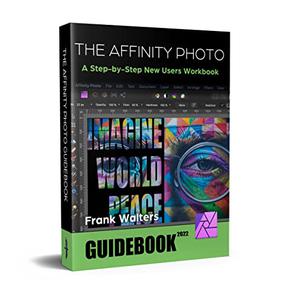 The Affinity Photo Guidebook: A Step-by-Step New Users Manual by Frank Walters English | 2022 | ISBN: N/A | ASIN: B0B5S34VCM | 325 pages | EPUB | 8.83 Mb The Affinity Photo Guidebook 2022 is a fun to use, step-by-step new user's manual. This do-it-yourself book will guide you through the first 10 skills new users need to know how to do plus twenty in-depth techniques to further increase your knowledge and skillset in using this market-leading photo editor. |